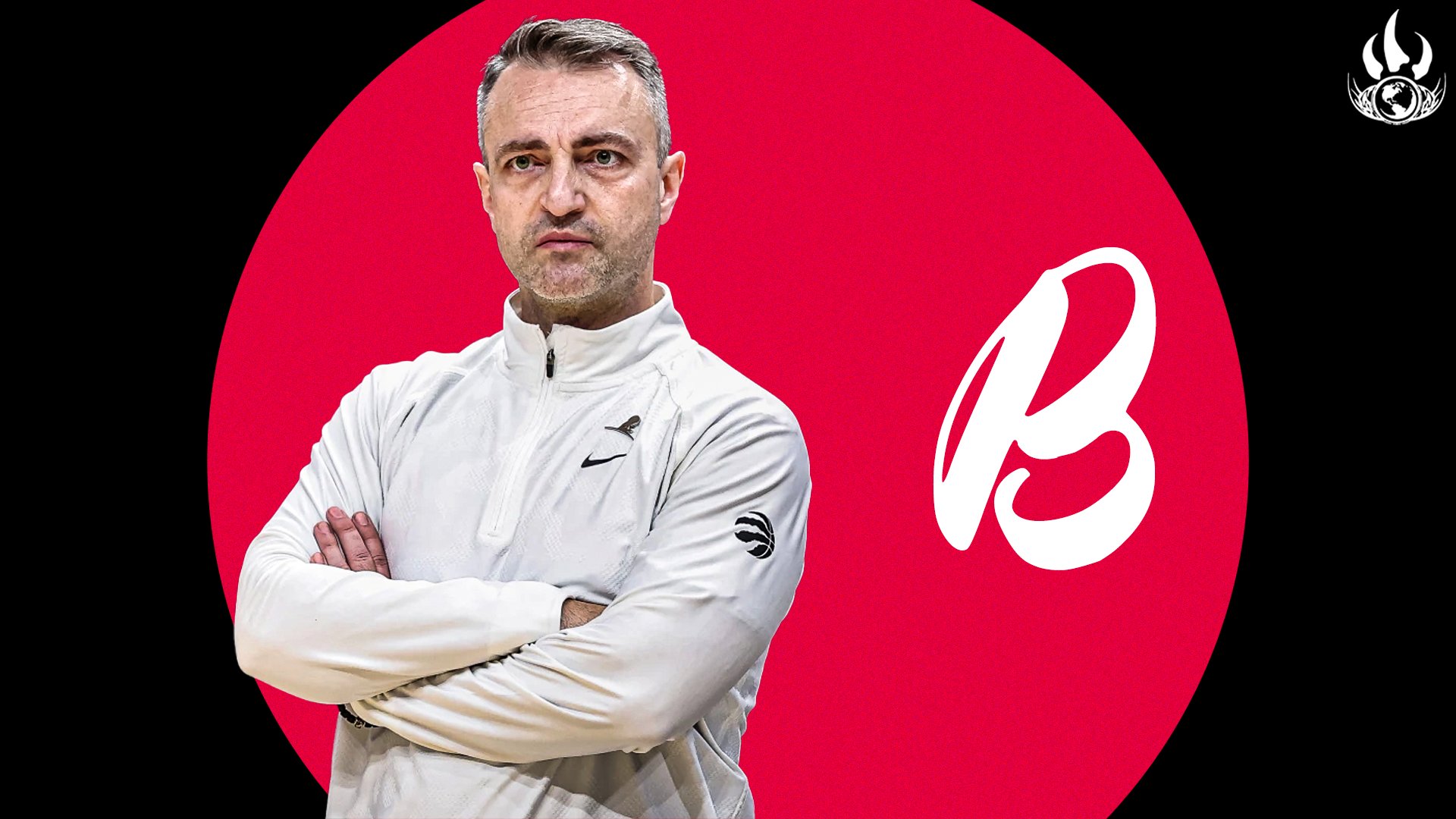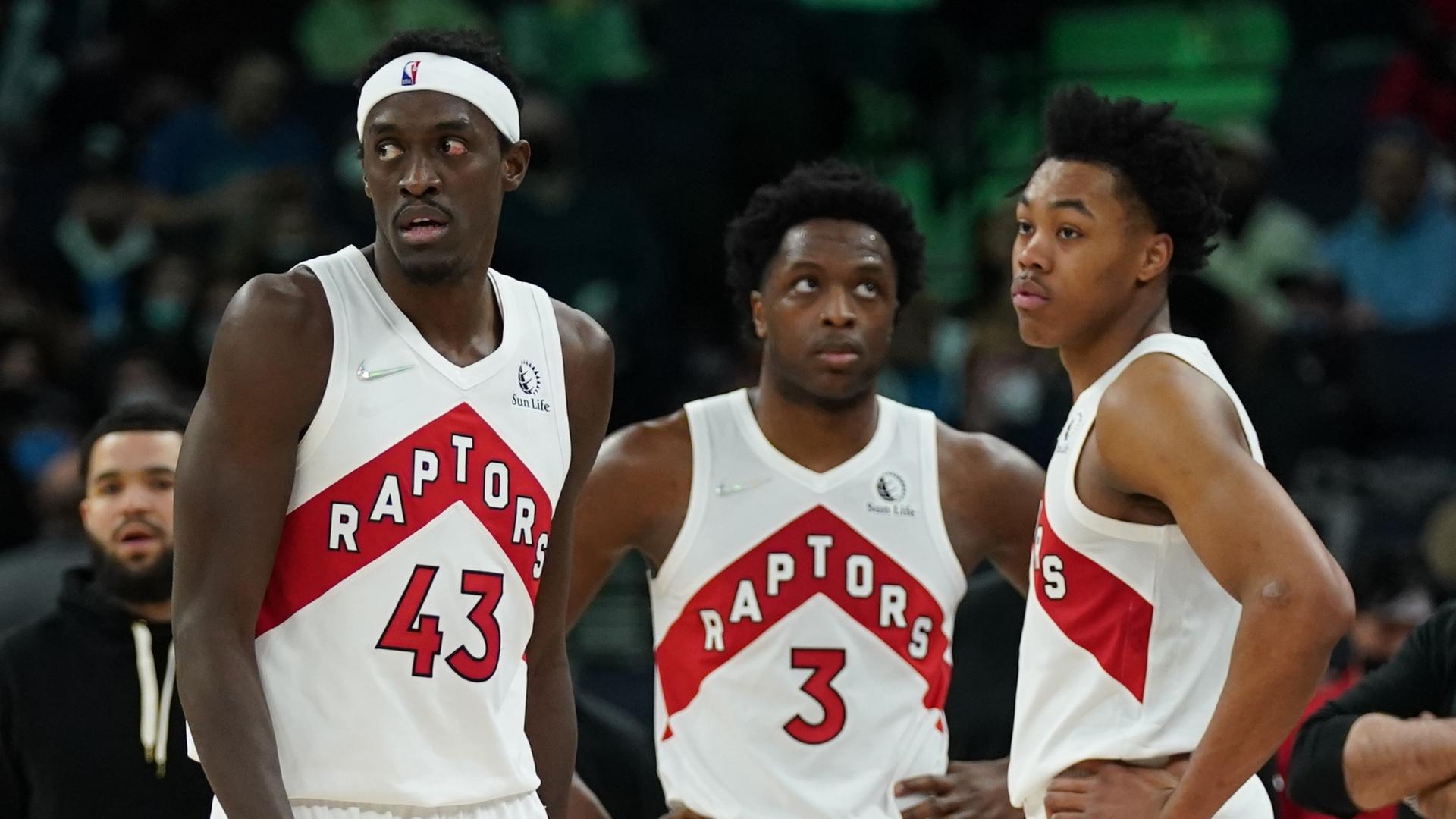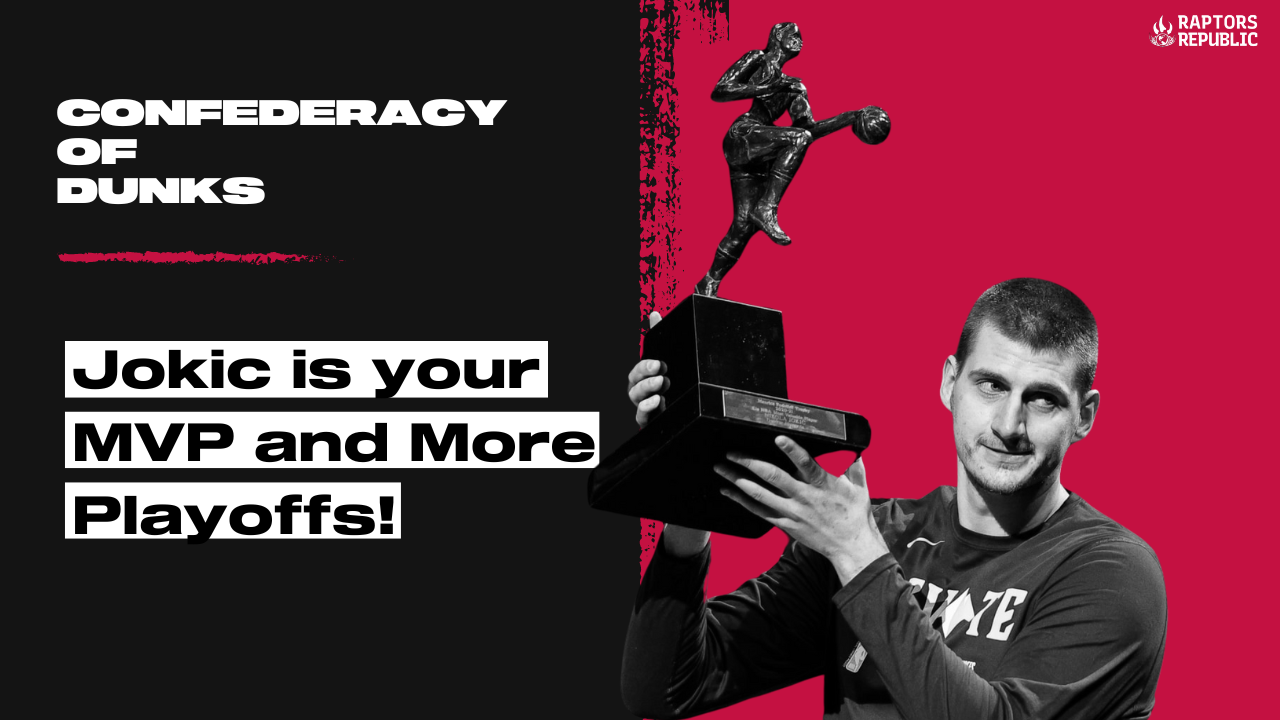The following is part of Raptors Republic’s series of pieces reviewing the season for the Toronto Raptors. You can find all the pieces in the series here.
When the Toronto Raptors hired Darko Rajakovic in June 2023, Raptors Republic’s own Louis Zatzman wrote a piece trying to answer what Darko Rajakovic would be like as a head coach.
His lede went like this: “The short answer, as with all coaches who have not been NBA head coaches, is that we simply don’t know.”
Fast forward to the end of Rajakovic’s first season with the Raptors and the short answer remains essentially the same…we don’t know.
Not an ideal conclusion after 82 games of information but it’s difficult to extrapolate much from a year marred by two franchise-altering trades, multiple personal losses, a league-shaking player scandal and more injuries than anyone should have to remember. A collection of circumstances atypical for any team, let alone one led by a first-time head coach.
By the time the regular season came to its merciful end Rajakovic had coached 30 players, tied for third-most in NBA history and his reward for the effort was a 25-57 record. The lowest win total in over a decade and a 46 per cent chance of keeping a well “earned” draft pick.
Thankfully, even with an understanding that it’s hard to gather much beyond “we don’t know,” there are always breadcrumbs full of information worth picking up. So let’s follow the trail.
Breadcrumb No. 1 – The offence
One of Rajakovic’s main priorities coming into the season was implementing a new offensive identity. One less “selfish” as Raptors president Masai Ujiri alluded to in his end-of-season press conference following the 2022-23 campaign, and instead, more free-flowing. Thus came the 0.5 offence, predicated on fast decision-making and ball movement.
Great in theory but difficult to execute when the roster wasn’t conducive to that style. Issue No. 1 was the Scottie Barnes-Pascal Siakam-Jakob Poeltl Bermuda triangle where spacing disappeared forever (-2.52 net rating). Issue No. 2 was their newly acquired point guard Dennis Schroder had a knack for dribbling the life out of possessions and was often ineffective in converting those touches into points. His 0.187 points-per-touch was far and away the lowest of any usual starter this season.
Given that, it’s not surprising the Raptors had a 110.9 offensive rating through the first three months. It was like Rajakovic was trying to draw an image with the eraser side of a pencil on a concrete sketchbook — the materials weren’t working well together.
Yet he was finding solutions, even with the flawed roster construction. Once Rajakovic began loosening the reins on his offensive philosophy and understanding the strengths of his team, the offensive rating improved month-over-month. Toronto’s production in the halfcourt flipped from the bottom half of the league in October to the top half in December.
Then came the first trade, sending OG Anunoby, Precious Achiuwa and Malachi Flynn to the New York Knicks for RJ Barrett and Immanuel Quickley. It might’ve been the thick of Canadian winter but we all got a taste of some Spicy BBQ.
Adding Quickley and Barrett as new weapons for Rajakovic was exciting but they were more perimeter-centric, which meant having to deal with an absence of size and athleticism left by Anunoby and Achiuwa.
However, it was hardly felt at first, as Rajakovic had a lumbering seven-foot Austrian to offset things as he roamed around the paint. On defence Poeltl was a deterrent and on offence he was a connector. The Raptors won three of their first four games in January and Spicy BBQ + Poeltl boasted a 124.4 offensive rating and +5.88 net rating. For a moment, as brief as it was, it seemed like Rajakovic developed a secret sauce and the franchise might consider keeping Siakam, or at least punt on the decision till the offseason (we know the front office likes doing that).
But then another roadblock appeared for Rajakovic and the team. This time in the form of a Poeltl rolled ankle against the Warriors, forcing the big man to miss their next 11 games, nine of which were losses. Without their starting centre, Spicy BBQ had a net rating of -6.9 and that loss of size and athleticism became glaring, especially on the glass. By the time Poeltl returned Siakam was already on the Indiana Pacers.

Rajakovic’s next opportunity to figure anything out came during the All-Star break. He described the week off as having a “training camp feel,” because it was a chance to hit a reset button. And again, when he was given time to tinker the results were positive.
The Raptors came out of the break and won three games in a row for the first and only time this season. The offence was firing on all cylinders (123.3 offensive rating) and role definition was crystal clear.
Unfortunately, the pizza party-induced euphoria was short-lived as another massive injury derailed all their momentum. Barnes fractured his left middle finger against the Warriors on Mar 1, and like the Poeltl injury, it removed a vital cog from the team’s engine. Whether that brief period of success was a flash in the pan or could’ve been a catalyst for a big run is going to be one of the biggest question marks of the 2023-24 season.
Things never recovered after the Raptors lost their lone All-Star for the rest of the season. Barrett and Quickley both ended up missing time, Poeltl went down again, Boucher tore his MCL, practically half the 905 roster moved up and Jontay Porter was hitting under instead of jumpers.
So to Kobi Simmons and Malik Williams and the rest of the skeleton crew, please forgive me, but there’s not much to analyze from your time on the team.
The question we’re left with is, was Rajakovic’s offence a success? The way I see it, when he had even a shred of (NBA calibre) roster consistency, the offence either looked good or progressed positively. Even with the flaws of the original makeup he eventually found ways to use the tools available to him. The samples of positive play were small, but they existed, and that’s something to latch on to ahead of next season.
At its peak, Rajakovic’s offensive style had players feeling empowered, constantly moving the ball and making multiple decisions within each possession. But even at its ugliest the offensive schemes still generated quality looks and that’s a testament to Rajakovic’s abilities as an offensive mastermind. Poor shot-making wasn’t the result of poor shot creation.
Breadcrumb No. 2 – Adjustments
This was arguably Rajakovic’s most visible area of weakness throughout the season. Granted, that’s often the case for assistant coaches making the jump, whether they’ve led a team in the G League or other spots. NBA game speed is jarringly higher and opponents have an abundance of resources to scout and disrupt your strategies.
Rajakovic is an admirable tactician but his commitment to a plan often came at the cost of making timely adjustments. With the talent available to him for a lot of the season, that was easier said than done, but if he deserves credit for gradually improving things like the offence, he also deserves criticism for how long some of those changes took.
An early example of that was his underutilization of Siakam. The All-NBA forward was one of the best post players in the league and parking him in the corners for chunks of time was simply a mistake. When operating to his strengths Siakam wasn’t the ideal fit for Darko ball, but no roster is ever going to be a 100 per cent fit for any system. It’s on the coach and his staff to adapt, and it took Rajakovic longer than it should have to soften his stance on the way they should play.
Another aspect of Rajakovic’s rigidity was with substitution patterns and how they disrupted game flow, at times. For instance, he was clearly committed to Barnes plus bench lineups despite a mixed bag of results. Those lineups yielded practically nothing to begin the season, but once trades were made and depth was added things marginally improved. But if they don’t work to start next season will Rajakovic stay committed to it because “that’s the plan”, irrespective of the results?
How frequently a game plan supersedes the flow of the game or the confidence of a player is answered differently by each coach. And so far Rajkovic isn’t one to walk off the beaten path all that often.
An example that sticks out was against the Houston Rockets in February when the Poeltl-less Raptors got beat by 29 points (they were down 14 after the first quarter). Jordan Nwora had come off back-to-back strong scoring games, putting up 24 and 17 points, yet he practically split minutes with Jalen McDaniels off the bench. No one’s saying Nwora is the second coming of Michael Jordan but that instance was a microcosm of Rajakovic’s decision-making throughout the year. Substitution patterns matter, but so do momentum and confidence when it comes to the game of basketball. Striking that balance is how the best coaches in the league thrive.
Lastly, Rajakovic and his staff never figured out an adjustment for their lackadaisical starts. The Raptors were a bottom-10 first-quarter scoring team, and it practically became a ritual to go down double digits. Even before the trades and injuries, the team rarely entered games with a sense of urgency. Toronto faced a double-digit deficit in 25 of their first 35 games of the year, most of which came in first halves. He was great at calling timeouts after giving up big runs but rarely were there visible improvements coming out of those breaks.
Breadcrumb No. 3 – Development
If adjustments were Rajkovic’s weakness, player development was his strength. A major part of his appeal was a track record of helping guys blossom in the NBA. Having worked with players like Desmond Bane, Ja Morant, Devin Booker and Domantas Sabonis among others.
Multiple players levelled up on the Raptors under Rajakovic. Barnes was obviously an important example as he became an All-Star, improved statistically across the board and bouncing back from a second season where he plateaued.
The 22-year-old deserves a ton of credit for his own growth, especially on offence, but Rajakovic found plenty of ways to maximize him as well. Notably on the defensive end, whenever the Raptors had a half-decent point-of-attack defender available Rajakovic would turn Barnes into a backline sweeper. He finished third this season in blocked threes and that was because of the freedom to work side-to-side more often.
Quickley and Barrett took strides under Rajakovic’s leadership as well. When Quickley was first introduced in Toronto he talked about wanting to showcase his playmaking abilities, but in an effort to do so, the 24-year-old limited the quality that made him special. Rajakovic kept pushing Quickley to create through his scoring gravity like modern guards and the Raptors’ new starting PG emerged shortly, averaging a career-high 6.8 assists.
Speaking of career-highs, Barrett arguably had his best stretch of NBA hoops when he joined the Raptors. At the very least it was the most consistent. The 23-year-old averaged 21.8 points, 6.4 rebounds and 4.1 assists on 61.5 per cent true shooting, all of which were the best of his five year career.
Rajakovic completely changed how Barrett played compared to his time in New York. Instead of operating around iso-centric players like Randle and Brunson, Barret was allowed to be one of those gravity-creating ball handlers. No longer relegated to the corners or fighting for scraps on offence, he was a vital part of the gameplan and flourished as a result.
Where Rajakovic really showed off his development talent was with the midseason turnaround of Gradey Dick’s season. After a disappointing first two months for the rookie, Rajakovic sent him down to the G League for a conditioning stint. While everyone was worried the sky was falling for the sharpshooter out of Kansas because of his sub-30 per cent three-point shooting, Rajakovic recognized there was nothing structurally wrong with the jumper. Dick was struggling to adjust to NBA speed and physicality. The game was taking a toll on him, especially on defence, so Rajakovic focused on getting the 13th overall pick stronger physically and sharper mentally.
After the All-Star break Dick looked like a new player. He increased his scoring total by seven points a game and his shooting splits ticked upwards as well. More than that, Dick wasn’t getting played off the floor defensively and he was able to handle contact, even leading the team in charges drawn. It was a full 180 on what many were worried was going to be a wasted rookie season. By the end of the year, Dick was one of the most impactful rookies, and arguably the best corner three point shooters amongst the freshman class.
After following the trail of breadcrumbs we’re left with plenty to ponder and not many significant conclusions to draw. In his first season, Rajakovic demonstrated the value of his offensive philosophy, showcased an ability to learn (albeit at his own pace) and was committed to empowering the Raptors’ young core.
Outside of those points, there was too much chaos surrounding the season to come out with anything more definitive. Leaving us with a “we don’t know, like when he started.
At least we do know that he’s earned the faith of the players and front office after being the steadying presence throughout this season. Every player in their exit interviews spoke highly about the impact Rajakovic had through the ups and downs.
”I think the person part is probably the biggest thing that I’ve taken away from Darko, Quickley said at his exit press conference. “I think we probably talked more about off the court stuff than we do about basketball stuff, which is pretty cool to have as a coach. But when we talk about basketball, his attention to detail is second to none.”
If not for the reasons above, Rajakovic at least earned a bit of blind optimism for next season with his epic rant following the loss to the Lakers.



